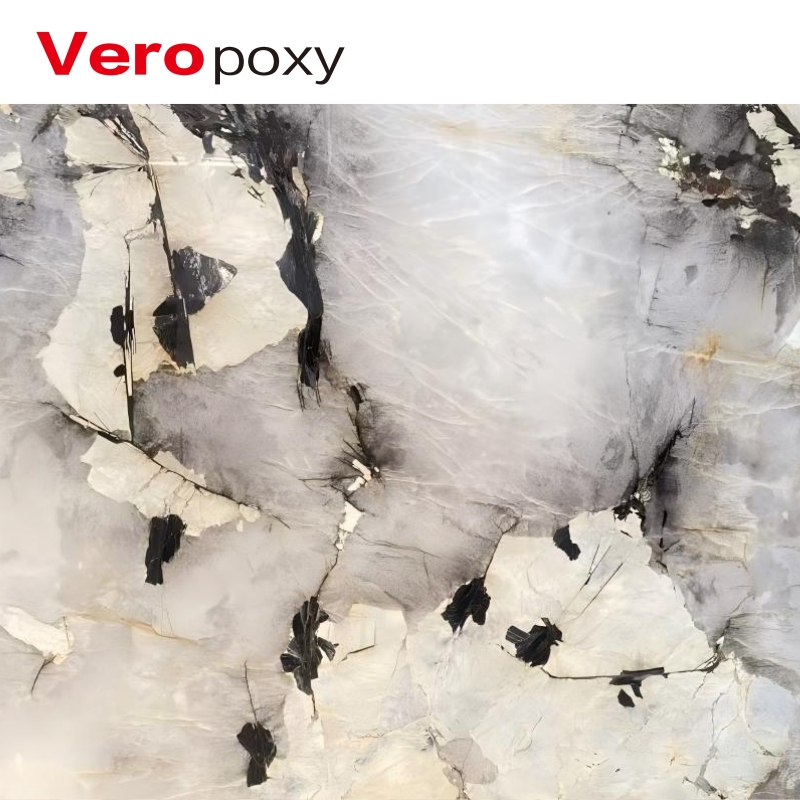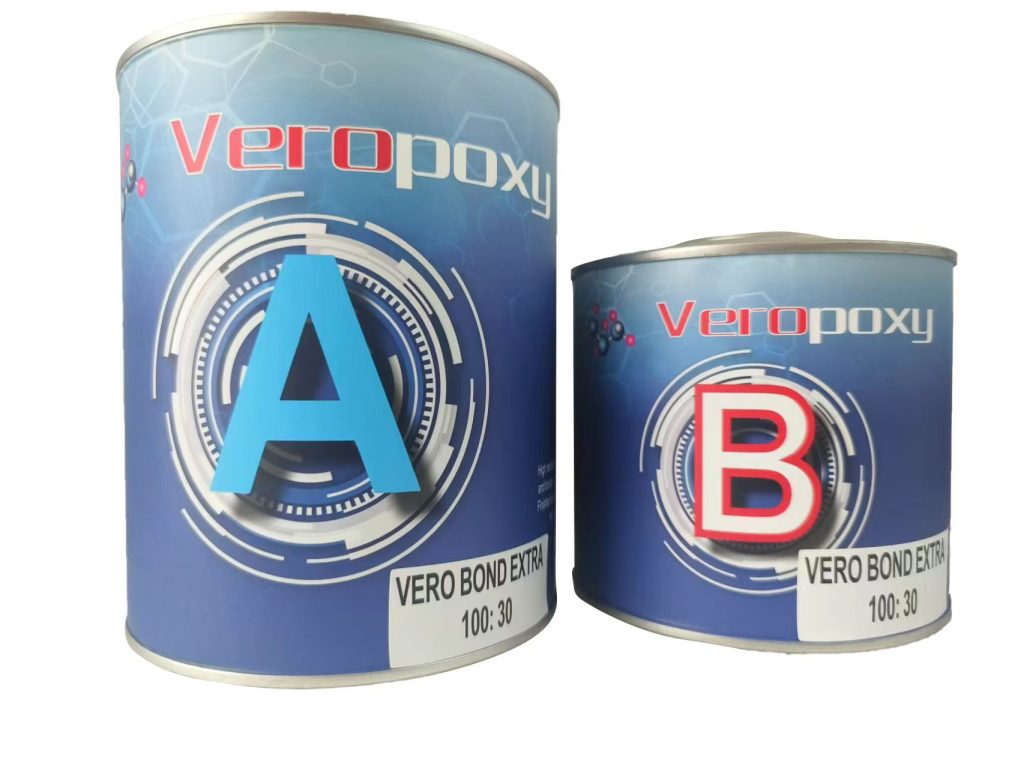Granite is widely used in kitchen countertops, floors, walls and other fields because of its hardness, durability and beauty. However, granite surface is prone to edge collapse and missing corners. These defects not only affect the appearance, but also may have adverse effects on the overall strength and service life of the stone. Fortunately, this problem can be effectively solved through epoxy resin repair technology. This article will introduce in detail how to use epoxy resin to repair the edge collapse and missing corners of granite, and explore the advantages and application methods of epoxy resin in stone repair.

best epoxy resin for granite
Basic concepts and advantages of epoxy resin
Epoxy resin is a polymer material formed by the reaction of epoxy groups and curing agents, with excellent adhesion, chemical resistance and temperature resistance. Epoxy resin is often used in many fields such as construction, decoration, and manufacturing. Especially in stone repair, it has the following advantages:
Strong bonding: Epoxy resin has extremely strong bonding force and can be tightly attached to the surface of granite to form a solid repair layer.
Strong crack resistance: The repaired area can effectively prevent the granite from collapsing or missing corners again.
Good fluidity: Epoxy resin has good fluidity and can fill the tiny cracks and gaps on the surface of granite.
Wear resistance: After the epoxy resin is cured, the surface has good wear resistance, which can effectively improve the service life of the repaired part.
Aesthetics: The color of epoxy resin is very close to that of granite, and the repair effect is natural and almost imperceptible.
Common causes of granite edge collapse and corner chipping
Granite surface edge collapse and corner chipping are usually caused by the following reasons:
External force impact: Due to its high hardness, granite is often easily hit or collided by external forces during transportation and installation, resulting in corner cracking.
Temperature difference change: Due to the high thermal expansion coefficient of granite material, when the temperature changes too much, it may cause the cracks of the stone to expand, and then cause edge collapse.
Long-term wear and tear: Long-term daily use, such as cutting vegetables, placing heavy objects, etc., will accelerate the wear of the stone, resulting in local corner chipping or cracking.
Improper installation: If the granite is not adequately fixed during installation or is improperly handled, it may cause uneven force on the stone, resulting in chipping and corners.
Steps to repair granite with epoxy resin
To repair the chipping and corners of granite with epoxy resin, you first need to prepare the required tools and materials. Next, follow the steps below:
1. Preparation
Before repairing, you must first do the following preparations:
Cleaning the granite surface: Use a detergent, soft cloth and water to thoroughly clean the granite surface to remove impurities such as oil, dust, etc., to ensure that the epoxy resin can adhere firmly to the surface.
Grinding the surface: Use sandpaper to gently grind the chipped or cornered area to remove loose stone chips and old repair materials, so that the repair area is smoother and easier for epoxy resin to bond.
2. Prepare epoxy resin
Choose the appropriate amount of epoxy resin and curing agent according to the size of the repair area. Mix the epoxy resin and curing agent in proportion according to the requirements of the product manual and stir evenly. Note that the mixing ratio of epoxy resin must be accurate, otherwise it may affect the curing effect.
3. Fill the defective area
Use a scraper or palette knife to evenly fill the mixed epoxy resin into the area where the granite is chipped or missing. Make sure that the epoxy resin completely fills the defective part and slightly exceeds the edge of the defect to form a naturally transitional repair layer.
4. Smooth the repair surface
Before the epoxy resin is completely cured, use a scraper or plastic blade to smooth the surface and remove excess resin. Make sure that the repair surface is flush with the surrounding stone to avoid obvious repair marks.
5. Cure the epoxy resin
Epoxy resin needs to be cured under certain temperature and humidity conditions, usually for 24 hours. During this period, ensure that the repair area is not affected by external forces to avoid affecting the repair effect. During the curing process, the epoxy resin will gradually harden and form a solid repair layer.
6. Sanding and polishing
After the epoxy resin is cured, use fine sandpaper to sand and remove the rough parts of the repaired part. Then, use a polishing machine or polishing cloth to polish the repair area to make its surface smooth and flat, consistent with the texture and gloss of the surrounding granite.
7. Clean the repair area
Finally, wipe the repair area clean with a cleaning cloth to remove excess resin residue and ensure that there are no impurities on the repair surface. At this point, the broken edges or missing corners of the granite have been effectively repaired, restoring the original beauty and use function.
Precautions for epoxy resin repair
When using epoxy resin to repair granite, pay attention to the following points:
Choose the right epoxy resin: Different types of epoxy resins are suitable for different repair needs. When choosing, make sure that the selected resin matches the properties of the granite and can provide sufficient adhesion and durability.
Temperature and humidity of the operating environment: The curing speed of epoxy resin is greatly affected by the ambient temperature and humidity. Higher temperature and low humidity are conducive to the curing of the resin, while too low temperature or too high humidity may lead to incomplete curing and affect the repair effect.
Post-repair inspection: After the repair is completed, carefully check whether there are defects in the repair area. If there are cracks or uneven areas, make supplementary repairs in time.
Application scenarios of epoxy resin repair
Epoxy resin can not only be used to repair the edge collapse and missing corner problems of granite, but also can be applied to the repair of other stones. For example, cracks and damage on the surface of marble, quartz stone and other stones can also be effectively repaired by epoxy resin. In addition, epoxy resin is widely used in the bonding, filling, reinforcement and other aspects of stone, and is an indispensable material in stone repair.

epoxy resin
Conclusion
Epoxy resin plays a vital role in the granite repair process due to its excellent performance. Through the correct operation steps, the edge collapse and missing corner problems of granite can be repaired efficiently and permanently, and its original beauty and function can be restored. At the same time, epoxy resin repair technology has strong applicability, can meet various stone repair needs, and provides an effective solution for the stone industry.
Through the introduction of this article, I hope that readers can fully understand the importance of epoxy resin in granite repair and master its correct use. If you are dealing with similar stone repair problems, you might as well try using epoxy resin, which will greatly improve the repair efficiency and extend the service life of the stone.
Post time: 1 月-17-2025

